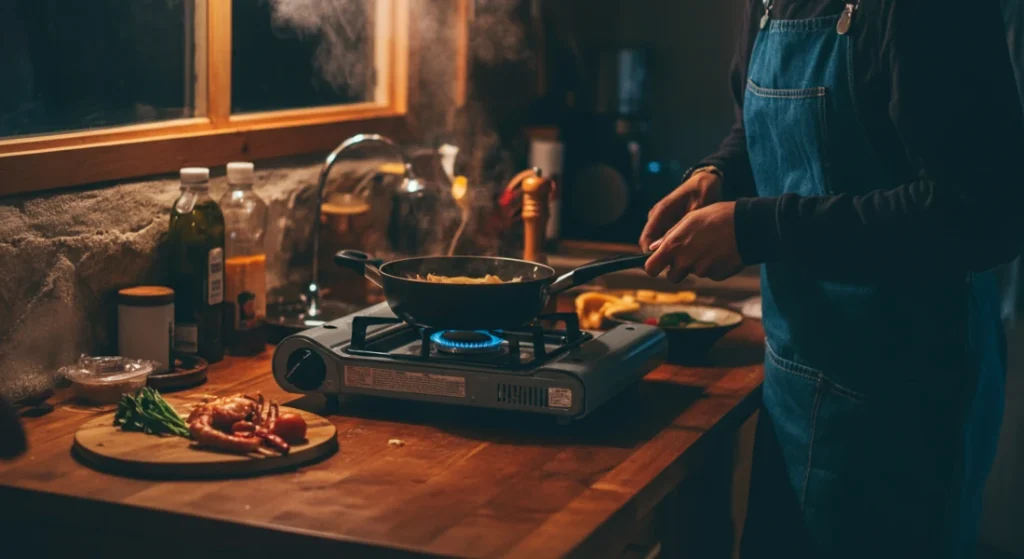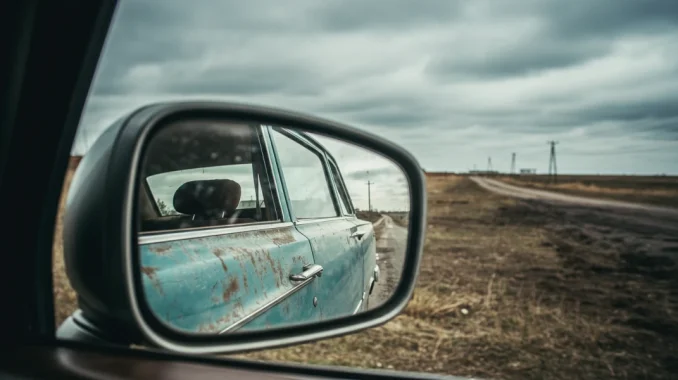In times of war, conflict, or disaster, electricity, gas, and running water may become unavailable for days, weeks, or even months. Without a plan for preparing food, people may struggle to cook, leading to malnutrition and weakened immunity. Knowing how to prepare meals without electricity is a survival skill that ensures you and your family remain nourished and healthy in an emergency.
This guide will teach you various cooking methods, essential tools, food recommendations, safety tips, and mistakes to avoid when preparing meals without modern utilities.

Step 1: Choosing the Best Emergency Cooking Methods
When the power goes out, having alternative ways to cook food can make a huge difference. Here are the most reliable methods:
1. Fire-Based Cooking (Wood, Charcoal, and Open Flame)
Fire-based cooking is one of the oldest and most effective ways to prepare meals during an emergency. It requires minimal equipment but does demand knowledge of fire safety and fuel management.
- Campfires & Open Fire Cooking – Ideal if you have an outdoor space and access to firewood. Cooking over an open flame allows for grilling, roasting, boiling, and baking in improvised ways.
- Charcoal Grills & BBQs – Work well for grilling meat, boiling water, and heating canned food. Charcoal is easy to store and lasts longer than wood.
- Rocket Stoves – Efficient, compact stoves that use small pieces of wood and burn cleanly. They generate intense heat while using minimal fuel, making them ideal for emergencies.
✅ Best for: Rural areas, gardens, and backyards. ❌ Not ideal for: Indoor use (dangerous smoke and fire hazards).
Tips:
- Use dry wood or charcoal for better heat and less smoke.
- Always cook in a well-ventilated area to prevent carbon monoxide poisoning.
- Store fireproof gloves and tongs for handling hot surfaces safely.
- If using a campfire, build a fire ring with rocks to contain flames and reduce fire hazards.
- Consider learning basic fire-starting techniques, such as using a fire striker or waterproof matches.
2. Gas-Based Cooking (Propane, Butane, and Alcohol Stoves)
Gas-based cooking is a reliable and controlled method that mimics traditional stove-top cooking. These stoves are portable and easy to use but require stocked fuel supplies.
- Camping Gas Stoves – Portable and easy to use; available in butane or propane versions. They provide strong, consistent heat and work well in almost any setting.
- Alcohol Stoves – Small, lightweight, and fueled by rubbing alcohol or denatured alcohol. These are great for boiling water and cooking simple meals.
- Gas Canister Stoves – Reliable for boiling water and cooking small meals. Some models allow adjustable flame control, making them ideal for simmering.
✅ Best for: Apartments, urban settings, and enclosed spaces with ventilation. ❌ Not ideal for: Long-term survival (fuel supply may run out quickly).
Tips:
- Stockpile extra fuel canisters, as they may become scarce in a prolonged crisis.
- Use windshields to conserve fuel and improve efficiency.
- Never use gas stoves in completely sealed rooms—always provide ventilation to avoid carbon monoxide buildup.
- Choose a multi-fuel stove if possible, allowing flexibility between propane, butane, and liquid fuel.
- Always check gas connections for leaks before igniting the stove.
3. Solar Cooking (Free Energy from the Sun)
Solar cooking is an excellent, fuel-free method for preparing food, though it requires patience and sunlight.
- Solar Ovens – Use mirrors and insulation to concentrate sunlight and cook food. They can reach temperatures of up to 200°C (400°F) and can cook a variety of meals, including bread and stews.
- Solar Reflectors – Direct heat from the sun to warm or boil food. These work best in warm climates.
- DIY Solar Cookers – Can be made from aluminum foil, black pots, and insulated containers.
✅ Best for: Sunny climates and long-term emergencies. ❌ Not ideal for: Cloudy or winter conditions where sunlight is weak.
Tips:
- Position solar cookers towards direct sunlight for maximum heat.
- Use dark pots with lids to absorb and retain heat.
- Plan meals that take longer to cook, as solar heating is slow.
- Insulate cooking pots with blankets or thick towels to retain heat after sundown.
4. No-Cook Meals (Raw, Ready-to-Eat, or Rehydrated Foods)
If you have limited cooking options, no-cook meals can sustain you temporarily.
- Canned foods – Tuna, beans, soup, vegetables, and meats can be eaten cold.
- Dried meals – Instant noodles, freeze-dried soups, and powdered meal replacements.
- High-energy snacks – Nuts, granola bars, peanut butter, dried fruit, and crackers.
- Rehydrated grains – Oats, couscous, or instant rice soaked in warm water.
- Preserved foods – Smoked meats, dried cheese, and vacuum-sealed rations.
✅ Best for: Immediate food needs when cooking isn’t an option. ❌ Not ideal for: Long-term survival, as fresh meals provide better nutrition.
Tips:
- Keep a manual can opener in your emergency kit.
- Rotate stocked food every few months to prevent expiration.
- Store food in sealed, rodent-proof containers.
- Learn how to ferment or pickle foods to extend their shelf life.
Step 2: Essential Emergency Cooking Tools
Even without electricity, having the right tools makes food preparation easier.
Additional Essential Cooking Equipment:
- Tripod or pot hanger – Ideal for suspending pots over an open fire.
- Dutch oven – A thick cast-iron pot that retains heat well and can be used for baking, stewing, and frying.
- Insulated food containers – Helps keep food warm for extended periods after cooking.
- Thermal cooker – Retains heat from boiling water, allowing food to slow cook without continuous heat.
Tips:
- Choose lightweight, multipurpose tools to save space.
- Have backup lighters, waterproof matches, or a flint striker for fire-starting.
- Keep a thermometer to check food safety if using alternative heat sources.
- Store extra utensils, plates, and water storage containers to prevent shortages.
Conclusion: Be Ready Before an Emergency Strikes
Cooking without electricity doesn’t have to be difficult—with the right tools, techniques, and food storage strategies, you can prepare meals safely and efficiently.
Final Recommendations:
- Invest in multiple cooking methods to stay flexible in a crisis.
- Stockpile shelf-stable foods that don’t require refrigeration.
- Prioritize safety when using fire, gas, or alternative fuels.
- Practice using your emergency cooking setup before disaster strikes.
- Learn how to make fuel-efficient stoves from everyday materials.
By preparing now, you can avoid hunger, maintain good nutrition, and keep your family safe no matter what happens.




